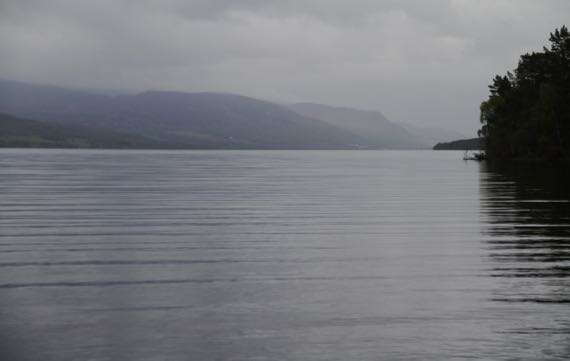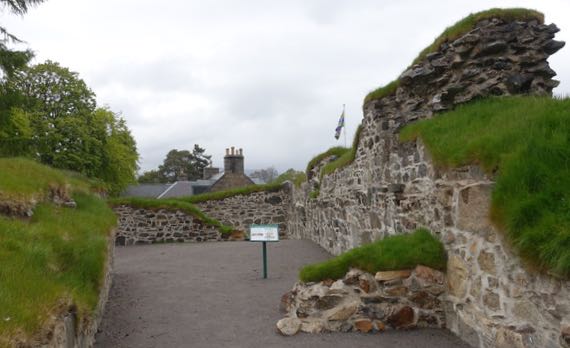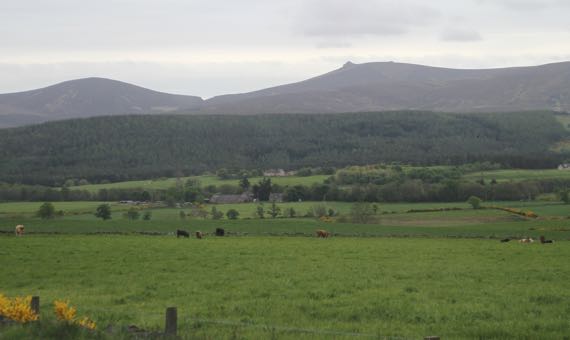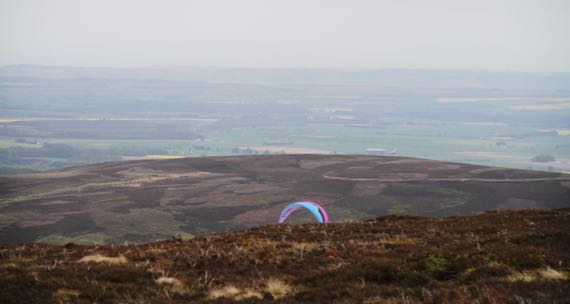
Possibly the oldest tree in Britain, the Fortingall yew is 2000–3000 years old. It’s behind the wall with the vertical stones on top. The center is gone, and it’s now three remnants of its one-time girth.

Still seeing snow remnants on peaks.

Loch Rannoch. We came here to visit the Black Wood of Rannoch, considered among the oldest forests in Britain. It seemed to me that the section we walked in had a few older trees, all twisted and looking like loggers had left them behind as not long-tall enough, interspersed among newer growth, although the sphagnum and other ground-cover looked less disturbed than I’ve been seeing.

Here’s another of those ancient places that were once centers-of-the-world and now are virtually ignored ruins. This is the recently stabilized ruins of Kindrochit Castle, used annually for many years by King Robert II (1357–1390, coronated in 1371), grandson of Robert the Bruce, and the first Stewart king.

One of the last highland scenes today, before we drove over the last summit (modern cairn there with at least a dozen bunches of soggy, desiccated flowers, left in memory of at least a dozen dearly departeds).

Here’s the view from the cairn, with a few fields of brilliant yellow canola we haven’t seen for a long time, and the canopy of a hang-glider? parasailor? In the way, way distance is the sea, which is a half-mile from us over some dunes, as I wrap this and prepare for bed.
5 June 2015 at 9:11 am
Pooh says:
Do canola fields look like they might be in the mustard family? When seen through the windows of a moving car? We were seeing yellow fields in Southern Illinois, and I thought it could be a crop, but Mark suggested weeds or a cover crop.